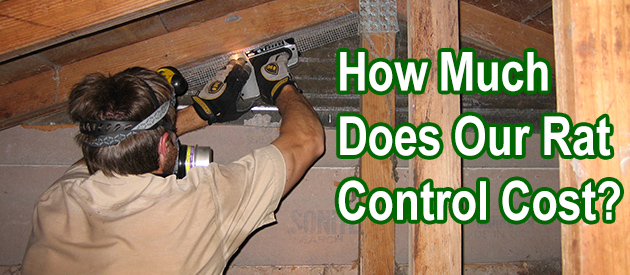Polk County, Lakeland Rat Control Situation:
I'm having trouble with a rat(s?) that is constantly chewing through the wires under my hood. The car is parked outside. After the last two times, my mechanic sprayed some red stuff over everything and that has provided me with some temporary relief. I have some traps w/ poison set around now, but I still need to protect my car in the meantime. What can I do? What is the "hot spray" that you refer to on your website? I will be moving and I've been told by the homeowner of the new home that he has seen rats in the garage... I also found mouse traps under the sink... We will be replacing the carpet before moving and at that time we will try to seal any holes. He said they were kangaroo or desert rats... I'm terrified as I have a phobia about this, I need advice on how to permanently get rid of any rodents in my new home. I've used moth balls and sonar devices, I've never seen rodents were I live, we also put poison in between the walls. Is this okay? Please help!
David, My son-in-law and daughter has for the last month trying to catch a rat in their attic. This is a very smart rat, we do not want to poison the rat for we do not want it to die in the attic. We are at whits end trying to catch this rat. We have tried glue trap, electronic trap, bucket of water trap, home defense trap, wooden mouse and rat trap. He is so smart he knows how to side step all the traps.Some one has seen the rat, it is a small size rat, He roams through the garage and attic. and he chews on card boxes and eats whatever food he finds.We wonder if you can help us catch this rat, with your expertise. He or she is a nuisance and we may have more rats, if it is a she. We sincerely thank you if you can help us or try to help us. Gratefully yours, May
Lakeland Rat Control Tip of The Week
Will A Rat And Her Babies Nest In An Attic?
If you have a possible rat infestation in your home, chances are that rats and her babies are nesting in your attic. These rodents have a special liking for dark places with small holes where they can reproduce and there is no better place to do that in your home than your attic.
Unlike other parts of every home, attics are places with little to no source of food. So you might be wondering why they would go all the way there just to stay. Once the rats in your home decide to move into your attic, their primary objective is to go and give birth to their babies. With their short gestation period of just 22 to 28 days, you will be having an average of 10 babies from just a single mother. This shows how rapid rats can breed in your attic when allowed to.
Having realized this, you need to get rid of the rats in your attic whenever you seek out to remove other animals nesting there too. Apart from breeding in your attic, rats are very destructive. Within just a short time, they can wreak havoc in your attic by creating cavities in and around your attic.
To remove the rats and her babies nesting in your attic, all you have to do is search your attic carefully. Although, this can be a very difficult task because rats are good at creating hideouts when they want to nest. As a result of this, you might need to consider other removal methods such as the use of lethal traps, rat poisons, and sticky traps which are often inhumane methods.
If you are not too comfortable with the use of these methods, the best thing you can do is hire a wildlife removal expert to help you get rid of the rat and her nest of babies.


